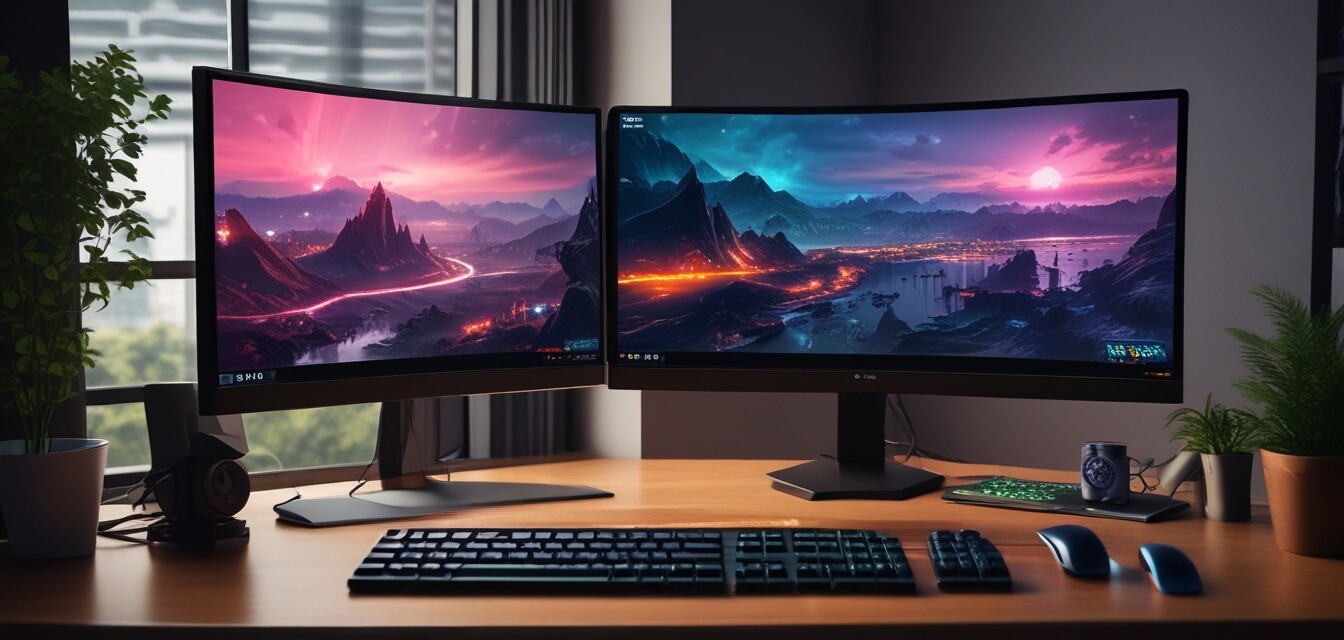
Setting Up a Dual-Screen Gaming Setup
Key Takeaways
- Dual-screen setups enhance multitasking abilities for gamers.
- Choosing the right monitors is crucial for an immersive experience.
- Proper cable management and placement can create an organized workspace.
- Adjusting settings for optimal display can improve gameplay aesthetics.
- Additional accessories can enhance your dual-screen experience.
Are you looking to level up your gaming experience? A dual-screen gaming setup can significantly enhance your multitasking capabilities and offer a more immersive environment. In this guide, we'll walk you through the entire process of setting up a dual-screen setup that maximizes your gaming potential.
Why choose a dual-screen setup?
Utilizing a dual-screen setup allows gamers to run multiple applications simultaneously. This means no more ALT+TABbing out of your game to check your streaming stats or chat. Here are some additional benefits:
- Better multitasking.
- Improved productivity for gamers who also stream or work.
- Enhanced visual experience for graphics-heavy games.
Steps to set up your dual-screen gaming environment
1. Choose the right monitors
Selecting monitors that complement each other in terms of size, resolution, and refresh rate is key. Consider these factors:
| Feature | Recommendation |
|---|---|
| Size | At least 24 inches for immersive gameplay |
| Resolution | 1080p to 1440p for sharp images |
| Refresh Rate | 75Hz or higher for smoother gameplay |
2. Connection and placement
Once you've chosen your monitors, connect them to your gaming PC using the appropriate cables (HDMI, DisplayPort, etc.). Here are some tips for placement:
- Align screens at eye level for comfort.
- Ensure there's enough desk space for both monitors.
- Use monitor stands or mounts if necessary.
3. Optimize your display settings
After connecting the monitors, you'll need to configure the display settings for optimal performance. Follow these steps:
- Right-click on the desktop and select “Display Settings.”
- Select “Multiple displays” and choose “Extend these displays.”
- Adjust the resolution and orientation for each monitor as needed.
- Ensure that the primary display is set to the main gaming monitor.
4. Cable management
Proper cable management not only improves aesthetics but also prevents damage. Here are some suggestions:
- Use cable ties, sleeves, or clips to organize cables.
- Route cables behind desks where possible.
- Label cables for easy identification.
5. Additional accessories
To enhance your dual-screen gaming experience, consider adding these accessories:
| Accessory | Purpose |
|---|---|
| Monitor stand | To raise monitors to eye level |
| RGB lighting | To create an immersive atmosphere |
| Gaming keyboard and mouse | To improve performance and responsiveness |
Common challenges and solutions
While setting up a dual-screen gaming setup can be rewarding, you might face a few challenges. Here are some common issues and their solutions:
Pros
- Increased screen real estate for better workflow.
- Enhances gaming immersion.
- Allows for multi-platform streaming and gameplay.
Cons
- Higher cost due to additional monitor.
- Requires more desk space.
- Potential for distraction from multiple screens.
Conclusion
A dual-screen gaming setup can transform your gaming experience by allowing for seamless multitasking and enhanced immersion. By following the above steps, you can create an optimized gaming environment that caters to your needs. Don’t forget to check out our Buying Guides for insights on the best gaming accessories and gear for your setup.
Feel free to explore our Gaming Accessories and Gaming Desktops categories for products that will complement your new dual-screen environment!
